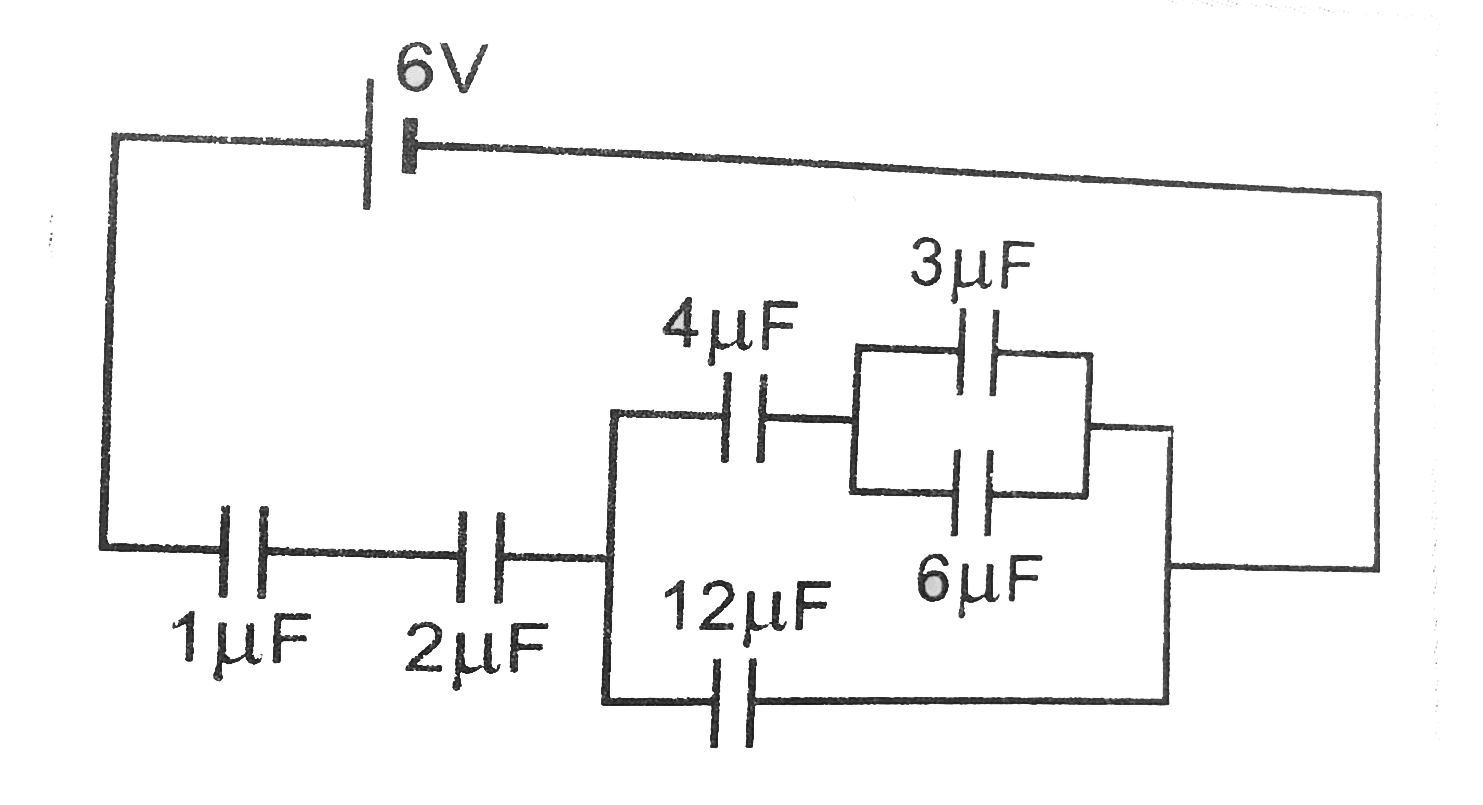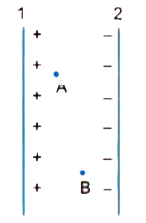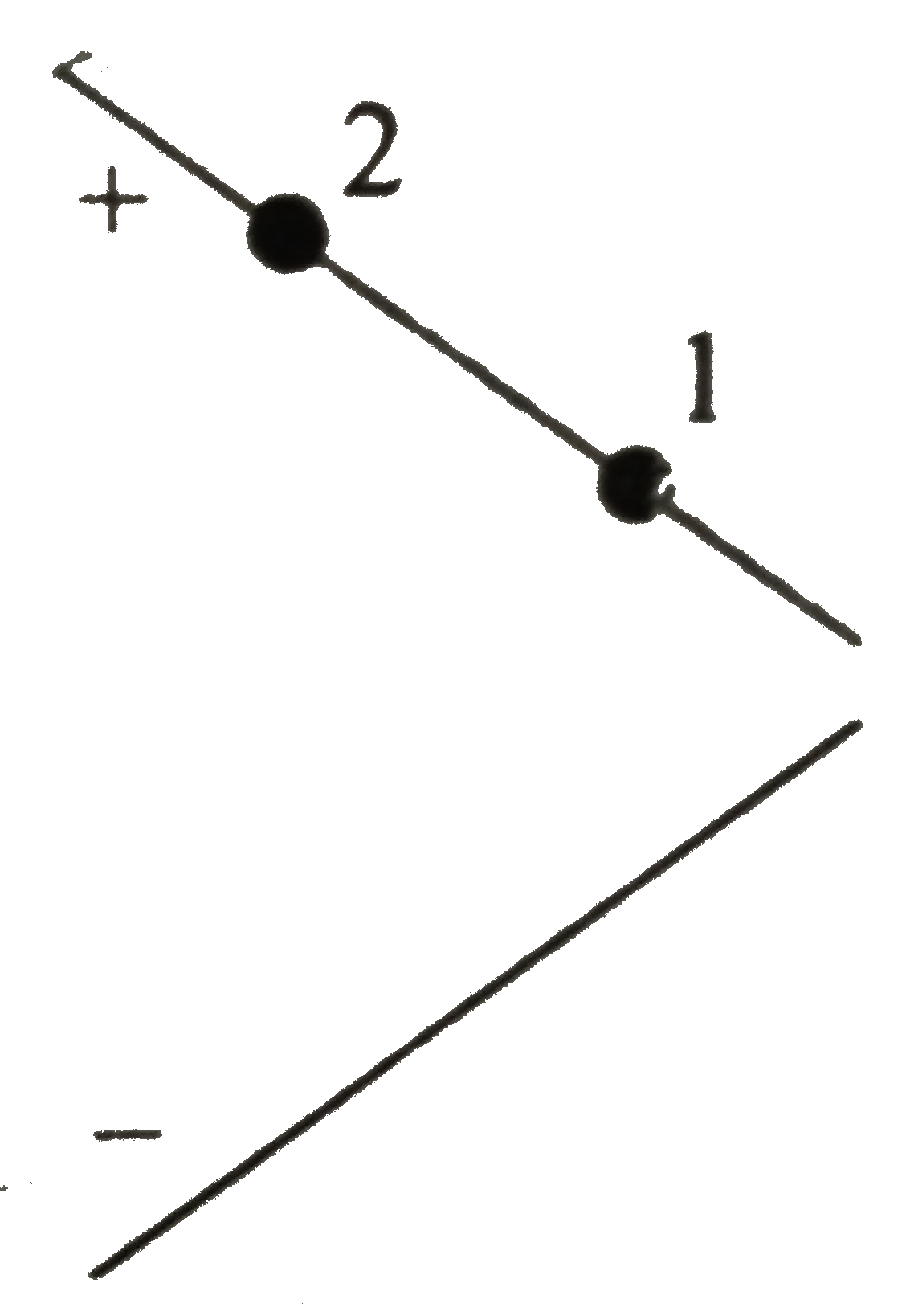Consider a capacitor shown in Fig. 1 . If we pull the plates of capacitor to a final position as show in Fig ,2 then we must perform work against electric force. For this situation . Mark out the correct statement . [take areas of plates as A]
![Consider a capacitor shown in Fig. 1 . If we pull the plates of capacitor to a final position as show in Fig ,2 then we must perform work against electric force. For this situation . Mark out the correct statement . [take areas of plates as A]](https://d10lpgp6xz60nq.cloudfront.net/physics_images/AKS_TRG_AO_PHY_XII_V02_A_C02_E03_018_Q01.png)
Work done is Q22ε0A(d2−d1) and is stored in volume A(d2−d1)
Work done is +Q22ε0A(d2−d1) and is stored in volume Ad2.
Work done is + ε0AV22(d2−d1d1d2) and is stored in volume A(d2−d1)
Work done is + ε0AV22(d2−d1d1d2) and is stored in volume Ad2
The correct Answer is:C
Topper's Solved these Questions
- CAPACITORS BOOK - AAKASH SERIESCHAPTER - CAPACITORS EXERCISE - ADDITIONAL PRACTICE EXERCISE (LEVEL - II LECTURE SHEET (ADVANCED))(Straight Objective Type Questions)
9 Videos
- CAPACITORS BOOK - AAKASH SERIESCHAPTER - CAPACITORS EXERCISE - ADDITIONAL PRACTICE EXERCISE (LEVEL - II LECTURE SHEET (ADVANCED))(Matrix Matching Type Questions)
2 Videos
- CAPACITORS BOOK - AAKASH SERIESCHAPTER - CAPACITORS EXERCISE - PRACTICE SHEET (EXERCISE - IV) (LEVEL - II (ADVANCED) (More than one correct answer Type Questions)
4 Videos
- ATOMSBOOK - AAKASH SERIESCHAPTER - ATOMSEXERCISE - PRACTICE EXERCISE
21 Videos
- COMMUNICATION SYSTEM BOOK - AAKASH SERIESCHAPTER - COMMUNICATION SYSTEM EXERCISE - LECTURE SHEET (LEVEL - I) (MAIN) (EXERCISE - IV) (Straight Objective & More than one Correct Answer Type Questions)
20 Videos
Similar Questions
Consider a capacitor as shown in figure. If we pull the plates of capacitor apart to a final position as shown in figure, then we must perform some work against the electric force. For this situation, mark out the correct statements.

View Solution
A source of sound and detector are moving as shown in Fig. at t=0. Take velocity of sound wave to be v. For this situation mark out the correct statement(s).
View Solution
Knowledge Check
Consider a capacitor as shown in figure. If we pull the plates of capacitor apart to a final position as shown in figure, then we must perform some work against the electric force. For this situation, mark out the correct statements.
 AWork done is Q2(d2−d1)/2ε0A and is stored in volume A(d2−d1).BWork done is +Q2(d2−d1)/2ε0A and is stored in volume Ad2.CWork done is +ε0AV2(d2−d1)/2d1d2 and is stored in volume Ad2.DWork done is ε0AV2(d2−d1)/2d1d2 and is stored in volume Ad2.
AWork done is Q2(d2−d1)/2ε0A and is stored in volume A(d2−d1).BWork done is +Q2(d2−d1)/2ε0A and is stored in volume Ad2.CWork done is +ε0AV2(d2−d1)/2d1d2 and is stored in volume Ad2.DWork done is ε0AV2(d2−d1)/2d1d2 and is stored in volume Ad2.
A source of sound and detector are moving as shown in Fig. at t=0. Take velocity of sound wave to be v. For this situation mark out the correct statement(s).AThe frequency received by the detector is always greater than f0BInitially, frequency received by the detector is greater than f0, becomes equal to f0, and then decreases with the time.CFrequency received by the detector is equal to f0 at t=dcotθ0(2v0).DFrequency received by the detector can never be equal to f0

A source of sound and detector are moving as shown in Fig. at t=0. Take velocity of sound wave to be v. For this situation mark out the correct statement(s).
View SolutionFind out the potentail difference across the plates of 1μF capacitors in Fig.

View SolutionTwo protons A and B are placed in between the two plates of a parallel plate capacitor charged to a potential difference Vas shown in Fig. The force on the two protons are exactly the same.

View SolutionConsider the situation shown in figure .The plates of the capacitor have plate area A and are clapmed in the laborstory . The dielectric slab is released from rest with a length a inside the capacitor. Neglecting any effect of friction or gravity, show that slab will execute periodie motion and find its time period.


View SolutionConsider the situation shown in figure. The plates of the capacitor have plate area A and are clamped in the laboratory, the dielectric slab is released from rest with a length a inside the capacitor. Neglecting any effect of friction or gravity . Show that the slab will execute periodic motion and find its time period.

View SolutionA parallel plate air capacitor is connected to a battery. If the plates of the capacitor are pulled farther apart, then state whether the following statements are true or false.
a. Strength of the electric field inside the capacitor remains unchanged, if the battery is disconnected before pulling the plates.
b. During the process, work is done by the external force applied to pull the plates irrespective of whether the battery is disconnected or not.
c. Strain energy in the capacitor decreases if the battery remains connected.
 .
.
View Solution
